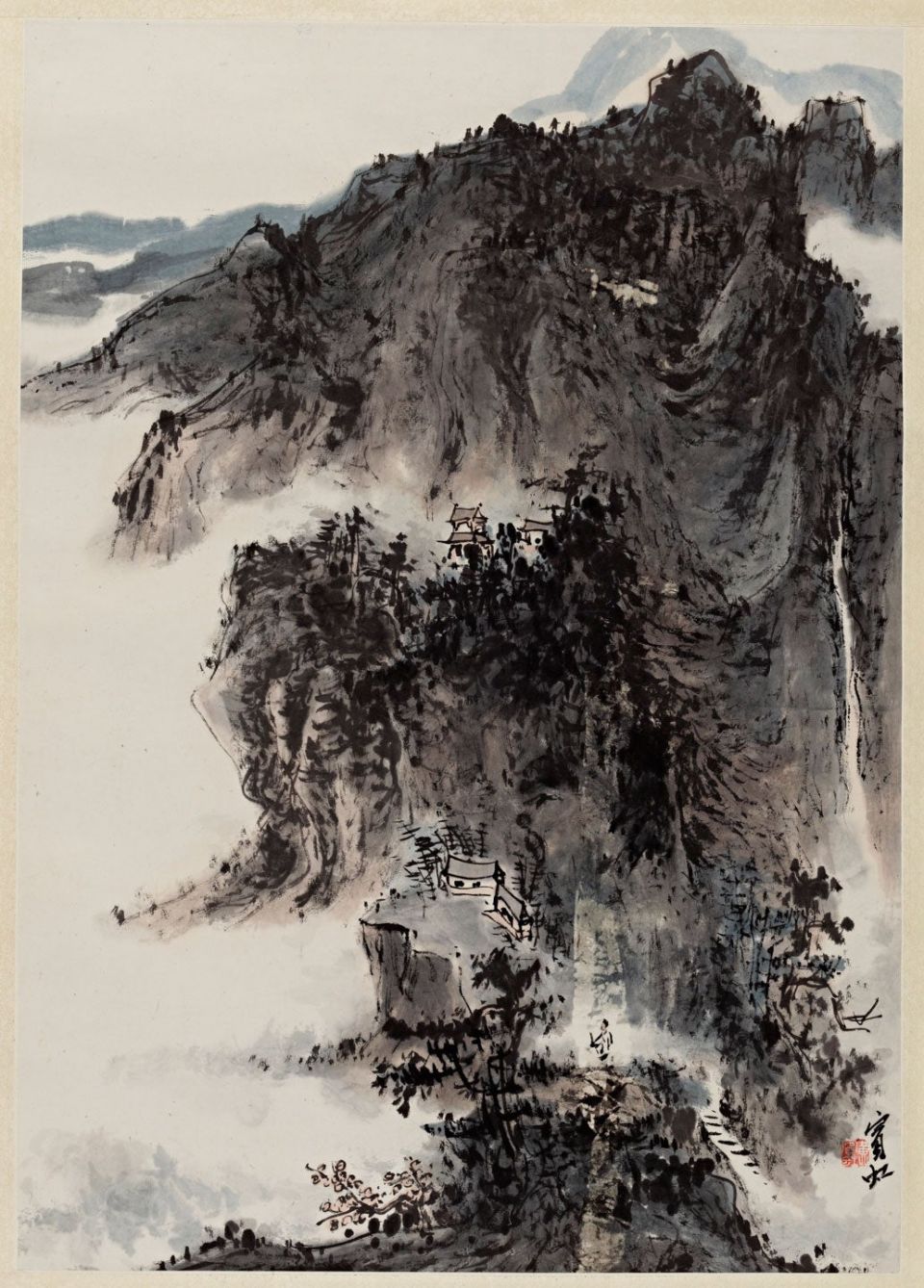Plan to visit the Cantor Arts Center as often as possible this fall because you are likely to see new works of art each time you return.

Huang Binhong (China, 1864–1955), Mountain
Landscape, c. 1953. Ink and color on paper.
Gift of Dr. Shirley Sun (Image credit: Cantor Arts Center)
The Cantor is in the midst of a major re-envisioning project that involves the museum’s permanent collection on the second floor. The project will culminate in the opening of five separate galleries under the umbrella exhibition title Object Lessons: Art & Its Histories and the introduction of contemporary works in the series New to the Cantor. The first reinstalled galleries will be unveiled Sept. 15 with subsequent reopenings and installations in October and November.
The project is born of sustained collaborations between Stanford faculty and museum curators who thought seriously about the value of learning about art objects through firsthand study. Interdisciplinary collaboration is central to the Cantor’s mission, and Object Lessons powerfully demonstrates the benefits of combining multiple voices and approaches to thinking about objects.
The exhibition’s layout and interpretive texts will reflect diverse perspectives and ideas from Cantor curators and Stanford faculty, and push the boundaries of what is possible at a 21st-century university art museum. The revitalized museum galleries are open both physically – offering long sightlines that elucidate visual and thematic connections across the history of art – and intellectually, allowing space within the galleries for teaching and talking.
The new constellation of objects on view are sure to spark fresh discoveries within the museum’s collection while also better elaborating the multiple histories that can be told through the museum’s holdings.

John Singer Sargent (U.S.A., 1856–1925), Portrait
of Sally Fairchild, 1884-1887. Oil on canvas. Gift
of Dr. Herbert and Elizabeth Sussman, David and
Valerie Rucker, Dr. Stephen Sussman and Kelly
Watson, Eric and Nancy Sussman, and Dean and
Chiara Sussman. (Image credit: Cantor Arts Center)
Alison Gass, Cantor’s chief curator and associate museum director for exhibitions and collections, said: “Steeped in the awareness that all art objects were once contemporary and reflect the context of their creation, the reinstalled galleries are dedicated to the examination of artworks as revelatory primary sources. Across the museum, familiar favorites and never-before-seen objects promise to provoke new discussions about our past and our current moment and to reveal the power of learning through visual art.”
Object lessons revealed, one by one
Opening on Sept. 15, Object Lessons: Art & Its Histories presents centuries of Western art from antiquity to modernity in three galleries on the second floor of the museum. It is organized around the curriculum of Art 1: Introduction to the Visual Arts, a two-part survey course led by Stanford professors Bissera Pentcheva and Alexander Nemerov, who will convene weekly sections in the museum’s galleries. Despite the exhibition being tailor-made for a single course, it will also satisfy visitors seeking the encyclopedic museum experience that the Cantor is known for.
Also scheduled to be revealed on the same day, and new to the Cantor, is a monumental light sculpture by artist Spencer Finch, who investigates the intersection between lived visual experience and scientific research. For the sculpture Betelgeuse, he uses a colorimeter – a device that measures the intensity of color – to record light seen in the natural world and replicate its hue and luminosity in sculptural form. Betelgeuse’s form evokes an explosive celestial object and emits the same light reading as its eponymous star – the second brightest in the Orion constellation.

Artist unknown (Greek, active 6th century BCE), Round Aryballos, 600 BCE – 575 BCE. Terracotta. Gift of Catherine Harwood Dewey, in memory of Dr. Hazel D. Hansen. (Image credit: Cantor Arts Center)
The second contemporary installation in the New to the Cantor series opens Oct. 6 and includes a major wall-work by San Francisco–based artist Barry McGee. It expands upon the museum’s holdings of post-World War II Bay Area art and provides a glimpse into more recent artistic practices with ties to the region. Artists like Stanford alumna Tauba Auerbach explore connections between art and science and the shifting terrain of art in the digital age. Also on view are works by Amy Sillman, R. H. Quaytman, Chantal Joffe and Chuck Close.
Highlights from the Marmor Collection opens a week later on Oct. 12 and juxtaposes the art of pioneering figures such as Robert Rauschenberg, Ed Kienholz, Bruce Nauman and Ellsworth Kelly. The works in this exhibition – ranging from photography to prints to mixed-media assemblages – highlight new modes of art making that took root after World War II. The Marmor Collection is a rich and varied compilation of more than 200 paintings, sculptures and works on paper by leading 20th-century artists and is part of the Cantor’s permanent collection.
Solo exhibition
Coinciding with the opening of Highlights is a solo exhibition of Dashiell Manley’s work – new to the Cantor and also his first ever in a West Coast museum. For over a century, artists have employed the newspaper as a source of inspiration, communication and even as an artistic medium. Los Angeles-based emerging artist Manley upholds this tradition and calls into question the ways in which we experience current events and the value of print journalism in an age increasingly mediated through digital media. This exhibition will include eight large-scale paintings.
On Nov. 2 Object Lessons expands to the Madeleine H. Russell Gallery, where a selection of the museum’s Asian art collections will be on view. Designed to complement Professor Richard Vinograd’s 2016-17 art history classes, the installation opens with highlights from modern China, including scroll paintings, prints and albums.
In February 2017, the exhibition shifts its focus to contemporary China with photographs, sculptures, prints, books and paintings. Artists include Zhang Daqian, Huang Binhong, Hong Hao, Xu Bing, Zhang Wang and many others.